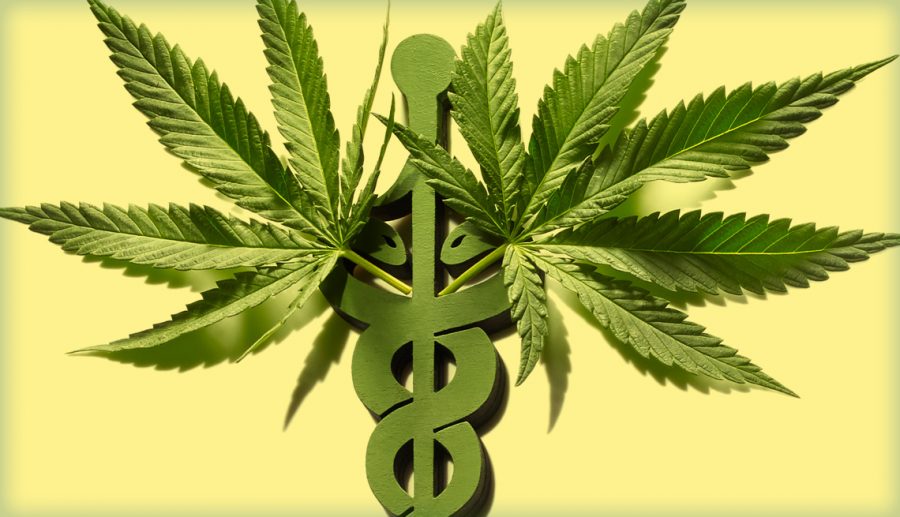Should Marijuana be a Medical Option?
Marijuana leaves on medical symbol
Due to its potential risks, medical marijuana is considered a Schedule 1 Controlled Substance by the US government. Despite this fact, over 32 states have legalized marijuana for medical use. Because of its associated risks and health detriments, and the lack of substantial data proving its medicinal effects, marijuana should not be legalized for medical use.
Marijuana is widely used as a painkiller as well as to treat a variety of diseases, from Alzheimer’s to anorexia. A myriad of health risks accompany the use of medical marijuana, stemming from the fact that the substance is not controlled, tested, or administered like regular medications. As a result, medical marijuana is not FDA approved, and does not have to abide by the quality control standards and safety regulations in place for conventional medications. Not only is medical marijuana addictive, it can also lead to the use of more dangerous drugs, making it a “gateway” drug that could result in a downward spiral of drug abuse. Various chemicals and additives in medical marijuana have been linked to fetal development and fertility issues.
Although marijuana extract formulas are going through clinical trials currently and awaiting approval, only two pill medications, dronabinol and nabilone, made from certain extracts of marijuana are FDA approved. Another concern revolves around the long-term effects of medical marijuana use, and little is known about the impacts marijuana has on the health of those with different medical conditions.
With more and more teens using marijuana regularly every day, the drug has become the single most used drug among minors in America. When the drug is placed into the medical context, teens start to normalize it and dismiss the harms that accompany marijuana use as insignificant. By sending this misleading message to kids, drug abuse is only going to become more and more prevalent among teens.







